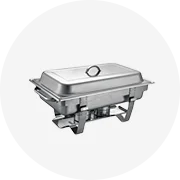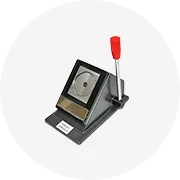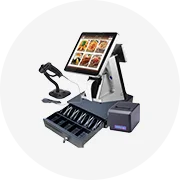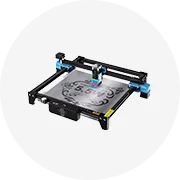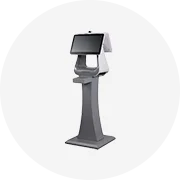Types of SCADA Protocols
SCADA (Supervisory Control and Data Acquisition) is a control system architecture used across industries to manage and monitor industrial processes. At the heart of SCADA systems lies the communication protocol—a set of rules that govern how data is transmitted between the central supervisory system and remote field devices such as PLCs (Programmable Logic Controllers), RTUs (Remote Terminal Units), and IEDs (Intelligent Electronic Devices).
These protocols ensure reliable, secure, and efficient data exchange in real-time, making them crucial for automation in sectors like energy, water treatment, manufacturing, and transportation. Each SCADA protocol is designed with specific performance characteristics, security features, and application suitability.
Key SCADA Protocols and Their Features
Modbus
One of the most widely adopted SCADA protocols, Modbus is an open-standard, serial communication protocol developed by Modicon (now part of Schneider Electric). It is known for its simplicity, reliability, and broad vendor support.
Advantages
- Open standard – freely available and widely supported
- Simple implementation and easy integration
- Versatile variants including RTU, ASCII, and TCP
- Compatible with both legacy and modern systems
Limitations
- Limited inherent security features
- No native support for complex data types
- Not ideal for high-speed or large-scale networks
Best for: Industrial environments requiring basic, cost-effective communication between SCADA and field devices
DNP3 (Distributed Network Protocol)
DNP3 is a robust, layered protocol specifically designed for electric utility applications. It supports advanced features such as time-stamped event reporting, data integrity checks, and secure authentication mechanisms.
Advantages
- Designed for mission-critical power systems
- Supports both serial and IP-based communication
- Event-driven communication reduces network load
- Includes built-in error detection and recovery
Limitations
- More complex than simpler protocols like Modbus
- Requires more configuration and expertise
- Less common outside the power industry
Best for: Transmission and distribution grids, substation automation, and power monitoring systems
IEC 61850
Developed by the International Electrotechnical Commission (IEC), this standard defines communication protocols for electrical substations. It supports interoperability between intelligent electronic devices (IEDs) using Ethernet-based communication.
Advantages
- Standardized for power systems automation
- Supports high-speed communication via GOOSE and SV messages
- Object-oriented data modeling enables scalability
- Enhances integration and future-proofing
Limitations
- Complex implementation requiring specialized tools
- Steep learning curve for engineers
- Higher cost due to infrastructure requirements
Best for: Substations, smart grids, and power generation facilities
Profinet
A leading industrial Ethernet standard developed by Siemens, Profinet integrates seamlessly into industrial automation systems. It provides real-time communication capabilities for SCADA and process control applications.
Advantages
- High-speed Ethernet-based communication
- Supports real-time and isochronous data transfer
- Interoperable with existing PROFIbus systems
- Scalable from small machines to plant-wide networks
Limitations
- Vendor-specific enhancements may limit openness
- Requires compatible hardware and software
- More suitable for factory automation than utilities
Best for: Manufacturing, discrete automation, and process control environments
OPC UA (OLE for Process Control Unified Architecture)
OPC UA is a platform-independent, service-oriented protocol that enables secure and reliable data exchange between devices and systems across multiple vendors. It is increasingly used in modern SCADA implementations for its flexibility and security.
Advantages
- Secure communication with encryption and authentication
- Platform and OS independent
- Supports complex data structures and metadata
- Enables cross-vendor interoperability
Limitations
- Higher resource consumption compared to older protocols
- Steeper learning curve for implementation
- May require additional middleware for legacy integration
Best for: Modern SCADA systems, IIoT integration, and enterprise-level data visualization
| Protocol | Communication Type | Security Level | Typical Use Case | Speed & Scalability |
|---|---|---|---|---|
| Modbus | Serial/IP-based | Moderate | General industrial control | Moderate |
| DNP3 | Serial/IP-based | High | Power grid monitoring | High |
| IEC 61850 | Ethernet-based | High | Substation automation | Very High |
| Profinet | Ethernet-based | Moderate | Factory automation | Very High |
| OPC UA | Ethernet/Web Services | Very High | Enterprise integration | High |
Expert Tip: When selecting a SCADA protocol, consider factors like network size, required speed, security needs, and compatibility with existing infrastructure. OPC UA and DNP3 are preferred for modern, secure deployments, while Modbus remains a go-to for legacy integration scenarios.
Specifications and Maintenance of SCADA Systems
Supervisory Control and Data Acquisition (SCADA) systems are essential for monitoring and managing industrial processes across various sectors such as energy, water treatment, manufacturing, and transportation. These systems integrate hardware and software components to provide real-time data acquisition, process control, and centralized management.
Key Specifications of SCADA Systems
Understanding the core specifications of SCADA systems is crucial for selecting the right architecture, ensuring system reliability, and optimizing performance:
Control Center
The control center acts as the central hub of a SCADA system, housing the Human-Machine Interface (HMI), data analysis tools, and historical data storage solutions. The HMI enables operators to interact with the system through intuitive dashboards, alarms, and trend visualizations.
Data analysis tools process incoming information to support decision-making, while robust data storage systems archive operational history for compliance, auditing, and troubleshooting purposes.
Field Devices
Field devices form the interface between the physical environment and the digital world of SCADA. These include sensors (measuring temperature, pressure, flow, voltage), actuators (controlling valves, motors, switches), and Remote Terminal Units (RTUs) that digitize analog signals and relay them to the control center.
Modern RTUs often come equipped with built-in processing capabilities, enabling local decision-making and reducing latency in critical operations.
Communication Networks
Reliable communication networks connect field devices to the control center, ensuring seamless data transfer over long distances. These networks utilize a mix of wired (Ethernet, fiber optics) and wireless (radio, cellular, satellite) technologies depending on the deployment environment.
Redundant communication paths and advanced protocols like Modbus, DNP3, and OPC UA help maintain uptime and interoperability across different platforms.
Geographic Distribution
Many SCADA systems span large geographic areas, especially in utility sectors like power distribution, oil and gas pipelines, and water/wastewater management. These systems must be designed to handle remote access, environmental extremes, and diverse networking conditions.
Distributed architectures with multiple regional control centers enhance resilience and reduce dependency on a single point of failure.
Real-Time Monitoring
One of the defining features of SCADA systems is their ability to monitor processes in real time. Operators can view live data streams, receive instant alerts for anomalies, and initiate corrective actions without delay.
This real-time capability is vital for maintaining operational efficiency, safety, and regulatory compliance in dynamic environments.
Data Acquisition
SCADA systems continuously collect vast amounts of data from distributed field devices. This data includes both current operational metrics and historical records used for performance analysis, predictive maintenance, and reporting.
Effective data acquisition strategies ensure that relevant information is captured accurately, stored efficiently, and accessible when needed for analysis or audits.
| Specification | Description | Typical Implementation |
|---|---|---|
| HMI Platforms | Software interfaces for operator interaction | FactoryTalk View, WinCC, Ignition, CitectSCADA |
| RTU Protocols | Communication standards for field devices | Modbus, DNP3, IEC 60870-5-104 |
| Network Topology | Physical and logical network layout | Star, ring, mesh configurations with redundancy options |
| Data Storage | Historical data retention methods | SQL databases, historians (e.g., OSIsoft PI System) |
Essential Maintenance Practices
To ensure optimal performance and longevity of SCADA systems, regular maintenance is essential. Below are recommended best practices:
- Maintain Updated Inventory: Keep detailed records of all software licenses, firmware versions, and hardware components. This helps during upgrades, replacements, and cybersecurity assessments.
- Perform Regular Backups: Schedule routine backups of configuration files, database schemas, and historical data. Store copies in secure, offsite locations to protect against data loss due to cyberattacks or hardware failures.
- Schedule Routine Checks: Conduct periodic system audits and preventive maintenance to identify issues before they lead to downtime. This includes checking server health, network integrity, and device calibration.
- Monitor System Performance: Continuously track network traffic, CPU/memory usage, and alarm frequency to detect anomalies early. Implement automated alerting systems to notify engineers of potential bottlenecks or security breaches.
- Ensure Staff Training: Provide ongoing training for all personnel involved in operating or maintaining SCADA systems. This includes understanding HMI navigation, emergency procedures, and cybersecurity best practices.
Important: Never ignore software updates or security patches for SCADA systems. Outdated systems are vulnerable to cyber threats that could compromise critical infrastructure. Always test updates in a sandboxed environment before deploying them in production settings.
| Maintenance Activity | Frequency | Recommended Tools |
|---|---|---|
| System Backup | Daily / Weekly | Acronis, Veeam, Custom Scripts |
| Configuration Audit | Quarterly | SCADA audit logs, Configuration Management Databases (CMDB) |
| Security Patch Deployment | As released | Vulnerability scanners, IT/OT patch management systems |
| Disaster Recovery Drill | Biannually | Failover testing tools, backup restoration frameworks |
Do's and Don'ts of SCADA Maintenance
- Do: Maintain updated documentation of system configurations, network diagrams, and change logs. This facilitates troubleshooting and future expansions.
- Do: Monitor system logs and network traffic regularly for signs of unauthorized access or unusual behavior.
- Don't: Use unsupported or outdated hardware/software components. These pose significant risks to system stability and security.
- Don't: Allow untrained personnel to operate or modify the SCADA system without supervision. Unauthorized changes can disrupt operations or introduce vulnerabilities.
- Don't: Neglect disaster recovery planning. Ensure that your team is prepared to restore functionality quickly in case of a major system outage or cyberattack.
How to Choose SCADA Protocol
Selecting the right SCADA (Supervisory Control and Data Acquisition) protocol is a critical decision for ensuring reliable, secure, and efficient communication within industrial control systems. The chosen protocol must align with operational requirements, network architecture, and long-term scalability goals. Here are key factors to consider when evaluating SCADA protocols:
Application Requirements
Every industrial application has unique demands that influence protocol selection. Some SCADA systems prioritize real-time monitoring and rapid data acquisition, while others focus on remote access across geographically dispersed locations.
- Real-Time Monitoring: Protocols like Modbus TCP or DNP3 are commonly used where low latency and high-frequency data updates are crucial.
- Remote Communication: For applications involving long-distance telemetry, such as in water treatment plants or oil pipelines, protocols like IEC 60870-5-104 or MQTT may be more appropriate.
- Hybrid Systems: Complex environments may require multi-protocol gateways to support different devices and subsystems under a unified SCADA framework.
Key consideration: Match the protocol's capabilities with your system’s primary function—control, monitoring, or both.
Network Topology
The structure of your network plays a major role in determining which SCADA protocol will perform best. Whether you're deploying a simple point-to-point setup or managing a complex meshed network with hundreds of nodes, the protocol must accommodate your topology efficiently.
- Point-to-Point: Simple configurations often use serial-based protocols like Modbus RTU or DF1.
- Star or Tree Networks: Ethernet-based topologies benefit from TCP/IP-compatible protocols such as Modbus TCP, PROFINET, or EtherNet/IP.
- Distributed Systems: In large-scale deployments, protocols like OPC UA provide robust support for hierarchical and distributed architectures.
Design tip: Evaluate how well the protocol handles multiple masters, slaves, and peer-to-peer communication.
Data Security
In today’s landscape of increasing cyber threats, securing SCADA communications is non-negotiable. A good SCADA protocol should offer built-in security features or integrate seamlessly with enterprise-level cybersecurity frameworks.
- Encryption: Look for support for TLS/SSL, AES, or other encryption standards to protect data integrity and confidentiality.
- Authentication: Protocols like OPC UA and MQTT can enforce user authentication via certificates or tokens.
- Integrity Checks: Ensure message validation mechanisms such as checksums or digital signatures are available.
Critical note: Legacy protocols like Modbus lack native security; always implement additional layers like firewalls or virtual private networks (VPNs).
Interoperability
Modern industrial environments often involve equipment and software from multiple vendors. Choosing a protocol that supports interoperability ensures seamless integration and reduces dependency on single suppliers.
- Standardized Protocols: Open standards like Modbus, DNP3, and IEC 61850 promote cross-vendor compatibility.
- Middleware Support: Protocols like OPC UA act as middleware, enabling data exchange between disparate systems and platforms.
- API Availability: Consider whether APIs exist for integrating with third-party analytics tools, HMIs, or cloud platforms.
Integration advice: Verify vendor documentation for protocol compatibility before procurement.
Data Requirements
Different SCADA protocols handle various types of data differently. Understanding the nature and volume of data being transmitted helps in selecting a protocol optimized for your system's needs.
- Time-Series Data: Real-time telemetry such as temperature, pressure, or flow rates benefit from fast-polling protocols like Modbus or CANopen.
- Event-Based Alarms: Event-driven protocols like IEC 60870-5-104 or MQTT are ideal for handling alarms and status notifications efficiently.
- Historical Logging: Protocols supporting bulk data transfer and time-stamping are essential for compliance reporting and trend analysis.
Data optimization: Consider using compression techniques or edge computing for bandwidth-constrained environments.
Scalability
As operations grow, your SCADA system should be able to scale accordingly without requiring a complete overhaul of the communication infrastructure. Selecting a scalable protocol ensures long-term viability.
- Node Expansion: Choose protocols capable of supporting thousands of nodes if future growth is anticipated.
- Bandwidth Efficiency: Opt for lightweight protocols like MQTT for IoT-enabled SCADA systems with many low-power devices.
- Cloud Integration: Cloud-ready protocols allow for easy expansion into hybrid or fully cloud-based SCADA architectures.
Growth planning: Always assess potential future needs beyond current deployment size.
Implementation Advice: Start with a pilot project using the selected protocol before full-scale deployment. This allows you to evaluate performance, troubleshoot issues, and make adjustments without disrupting critical operations.
| Protocol | Best For | Security Features | Typical Use Case |
|---|---|---|---|
| Modbus RTU/TCP | Simple installations, legacy systems | None (requires external security) | Industrial automation, building controls |
| DNP3 | Utilities, remote telemetry | Basic authentication, optional encryption | Water/wastewater, power distribution |
| OPC UA | Interoperability, modern systems | Built-in encryption, authentication | Manufacturing, IIoT integration |
| MQTT | Lightweight, IoT applications | TLS/SSL, username/password | Remote monitoring, mobile access |
| IEC 60870-5-104 | Power grid telemetry | Moderate security support | Substation automation |
How to DIY and Replace a SCADA Protocol
Modifying or replacing a SCADA (Supervisory Control and Data Acquisition) protocol is a critical task that can significantly impact industrial operations, automation systems, and data integrity. While it's always recommended to consult an expert for such tasks — especially due to the high stakes involved in industrial control environments — understanding the process can help system administrators and engineers prepare for a successful transition.
Important Notice: Even small misconfigurations in SCADA protocols can lead to operational downtime, security vulnerabilities, or safety risks. Always ensure you have proper documentation, backup plans, and ideally professional oversight before proceeding with any changes.
Preparation: Laying the Groundwork
Before initiating a protocol replacement, thorough preparation is essential. Begin by backing up all configurations, historical data, custom scripts, and user-defined logic within your SCADA system. This ensures that if anything goes wrong during the transition, you can restore the system to its previous state without significant disruption.
Step-by-Step Guide to Replacing a SCADA Protocol
- Understand the Current and New Protocols
- Conduct a detailed analysis of the current SCADA protocol, including its architecture, data structures, polling rates, and communication methods.
- Review the specifications of the new protocol, paying close attention to how it differs from the existing one in terms of message formats, error handling, security features, and interoperability with legacy systems.
- Ensure your team has access to vendor documentation and understands the implications of switching protocols on real-time operations and data logging.
- Ensure Compatibility Across Your System
- Verify that all hardware components — including PLCs, RTUs, HMIs, and communication modules — support the new protocol.
- Check software compatibility with SCADA servers, client applications, historians, and third-party integrations.
- If upgrades are necessary, create a phased implementation plan and budget for any required hardware replacements or firmware updates.
- Configure the New Protocol Properly
- Follow the manufacturer’s configuration guide to set up the new protocol on all relevant devices and servers.
- Define communication parameters such as IP addresses, port numbers, timeouts, retry limits, and data mapping rules.
- Use test environments to simulate traffic and verify that the configuration supports expected load and response times.
- Implement Robust Security Measures
- Enable secure communication channels using encryption (e.g., TLS/SSL) where applicable.
- Set up user authentication mechanisms such as username/password, certificates, or two-factor authentication.
- Apply role-based access controls to limit who can make configuration changes or view sensitive data.
- Test Thoroughly Before Deployment
- Perform end-to-end testing in a controlled environment to validate communication between all components.
- Simulate faults and network disruptions to evaluate system resilience and recovery capabilities.
- Monitor performance metrics like latency, throughput, and CPU/memory usage to identify bottlenecks.
- Train Personnel on the New Setup
- Provide hands-on training sessions for operators and maintenance staff to familiarize them with the new interface, commands, and troubleshooting procedures.
- Create updated documentation, diagrams, and standard operating procedures (SOPs) reflecting the new protocol configuration.
- Establish a support channel or escalation path for any issues that arise post-deployment.
- Monitor and Optimize Post-Deployment
- Use built-in diagnostic tools or third-party monitoring solutions to track system health and protocol behavior in real time.
- Collect feedback from operators and use it to fine-tune configurations for better performance and usability.
- Keep logs of errors, alarms, and system events to proactively address potential issues before they escalate.
| Phase | Key Actions | Potential Risks | Recommended Tools |
|---|---|---|---|
| Understanding Protocols | Documentation review, team briefing, gap analysis | Misinterpretation of specs, overlooked dependencies | Protocol analyzers, vendor manuals, comparison spreadsheets |
| Compatibility Check | Firmware checks, device inventory, upgrade planning | Incompatible devices, unexpected costs | Device configuration tools, compatibility matrices |
| Configuration | Parameter setup, simulation, validation | Incorrect settings, poor performance | SCADA configuration software, simulators |
| Security Implementation | Authentication setup, encryption enablement | Weak security, unauthorized access | Firewalls, certificate managers, IDS |
| Testing | End-to-end tests, fault simulations | Undetected bugs, performance issues | Test harnesses, network sniffers, monitoring dashboards |
Expert Tip: Consider running both the old and new protocols in parallel for a short period to compare performance and ensure seamless data exchange before fully decommissioning the legacy protocol.
SCADA Protocols Explained – Frequently Asked Questions
A SCADA (Supervisory Control and Data Acquisition) protocol refers to the set of communication standards and data exchange mechanisms used in industrial automation systems. These protocols enable seamless interaction between central control systems and remote field devices such as sensors, PLCs (Programmable Logic Controllers), RTUs (Remote Terminal Units), and HMIs (Human-Machine Interfaces).
In practical terms, SCADA protocols form the backbone of industrial monitoring and control operations across sectors like:
- Telecommunications infrastructure management
- Water and wastewater treatment plants
- Pipeline monitoring in oil and gas industries
- Power generation and distribution networks
These protocols ensure that real-time data can be collected, analyzed, and acted upon remotely, enabling efficient and reliable industrial process management.
SCADA protocols serve several critical functions within an industrial control system, including:
- Data Acquisition: Collecting real-time operational data from sensors and equipment
- Process Monitoring: Providing continuous visibility into system status and performance metrics
- Remote Control: Enabling operators to adjust settings and issue commands to field devices
- Alarm Management: Detecting anomalies and triggering alerts for abnormal conditions
- Historical Data Logging: Recording system events and operational parameters over time for analysis
- Communication Security: Implementing authentication and encryption measures where applicable
Together, these functions allow for centralized management of distributed systems, improving operational efficiency while reducing manual intervention requirements.
SCADA protocols come in two primary forms:
- Open Protocols: Publicly available standards that promote interoperability between different manufacturers' equipment. Examples include Modbus, DNP3, and IEC 60870-5.
- Proprietary Protocols: Developed and maintained by specific vendors, often requiring specialized hardware or software. While they may offer optimized performance for particular systems, they can create vendor lock-in situations.
The choice between open and proprietary protocols significantly impacts long-term system flexibility, maintenance costs, and scalability. Many modern implementations favor open standards to enable multi-vendor integration while maintaining backward compatibility with legacy systems.
A SCADA protocol serves as the fundamental communication layer in any industrial control architecture. Its primary roles include:
- Establishing standardized message formats for data exchange
- Defining rules for device addressing and network topology
- Managing request-response interactions between master stations and field devices
- Ensuring data integrity through error detection mechanisms
- Providing mechanisms for time-stamping and event sequencing
By standardizing these communication aspects, SCADA protocols enable consistent system behavior, simplify troubleshooting, and support integration across geographically dispersed locations. This is particularly crucial in applications like power grid management where precise timing and coordination are essential.
Several key SCADA protocols have become industry standards due to their reliability and widespread adoption:
| Protocol | Primary Use Cases | Key Features |
|---|---|---|
| Modbus | Industrial automation, building systems, energy management | Simple, robust, widely supported over serial and TCP/IP connections |
| DNP3 | Electric utilities, water/wastewater, oil & gas | Designed for high latency networks, supports time-tagged data and unsolicited reporting |
| IEC 60870-5 | Power system automation, substation control | International standard with multiple frame formats for different transmission needs |
| OPC UA | Manufacturing, process industries, IIoT integration | Modern platform-independent architecture with built-in security features |
| Profibus/Profinet | Factory automation, process control | High-speed capability with real-time performance characteristics |
Each protocol has evolved to meet specific industry requirements while balancing factors like transmission speed, data complexity, and network reliability. The selection typically depends on application needs, existing infrastructure, and regional standards.





















































